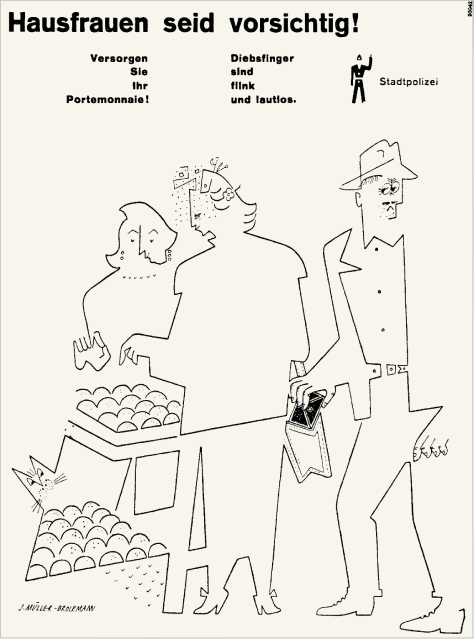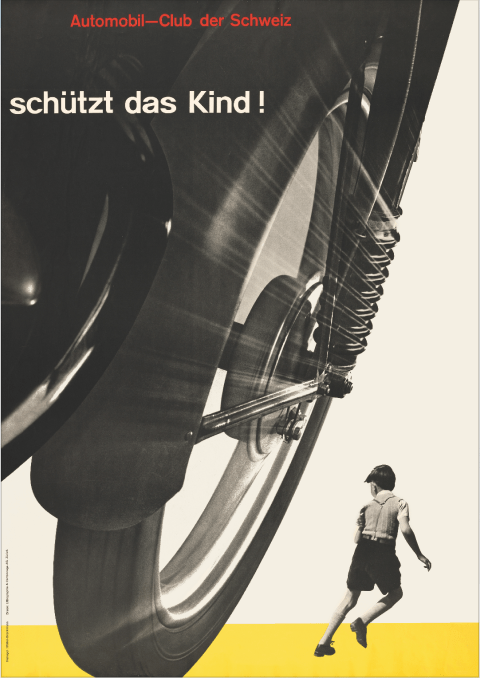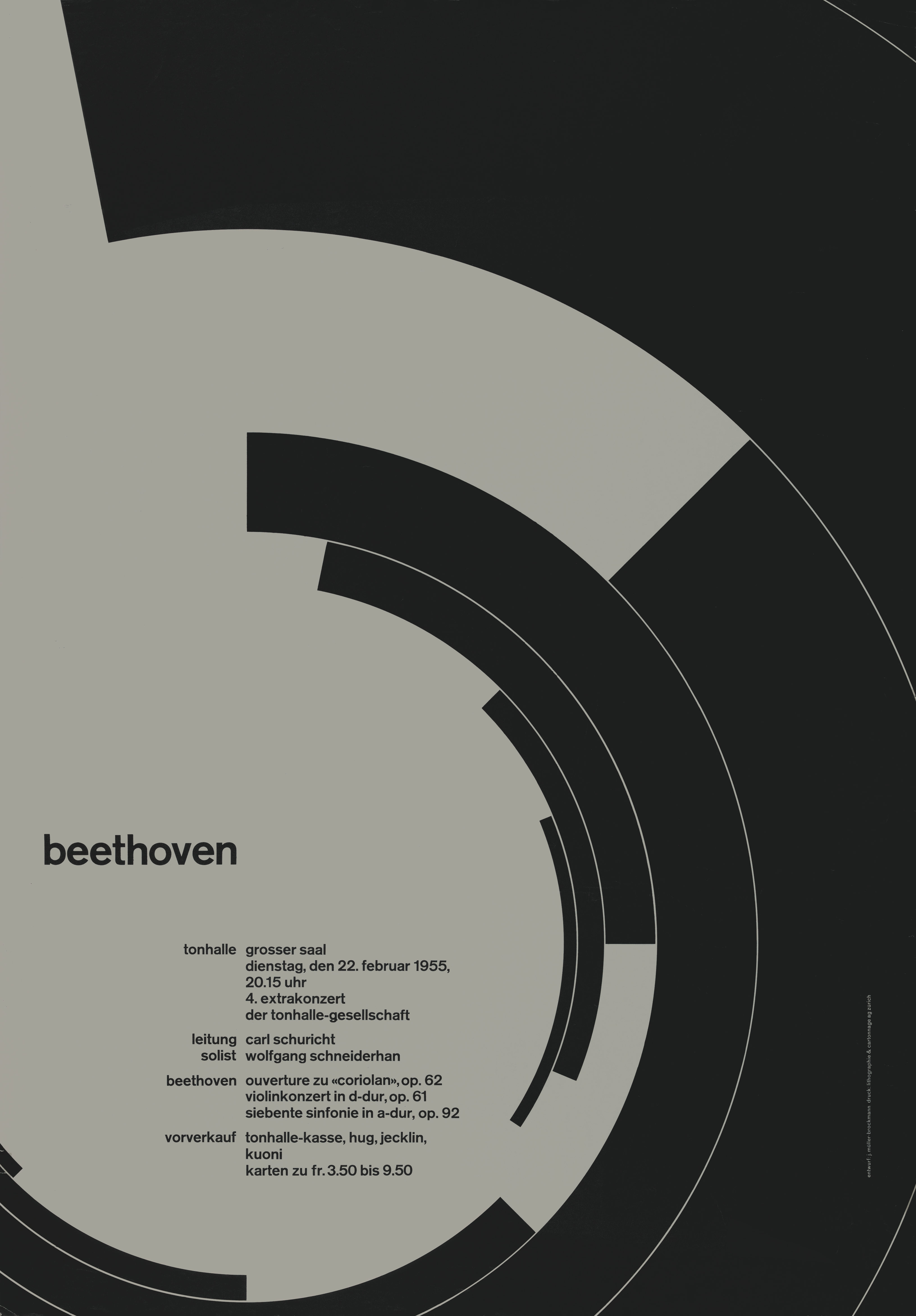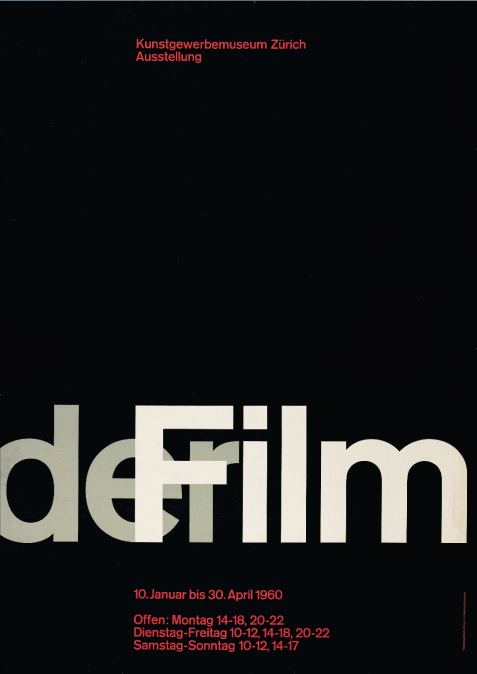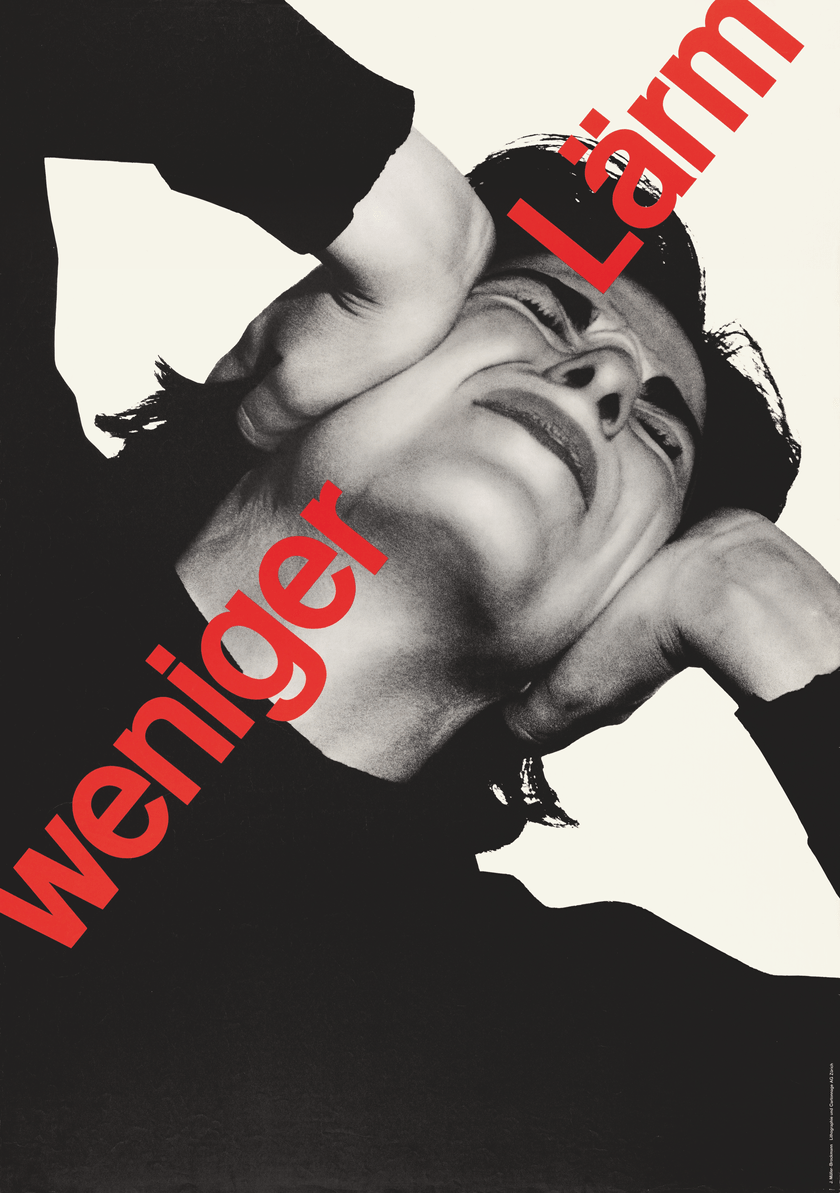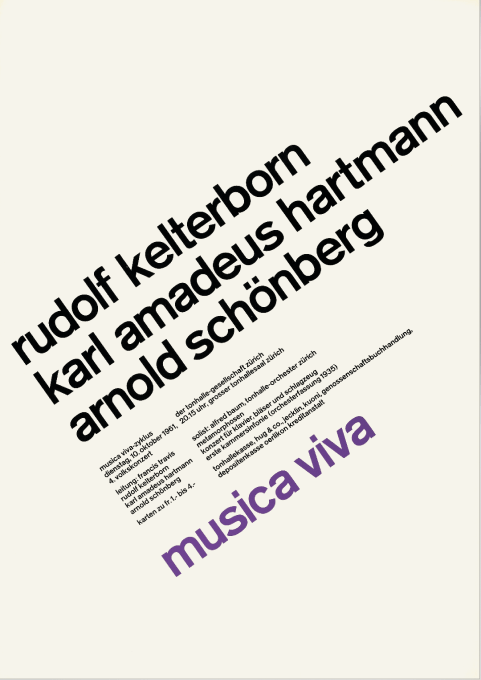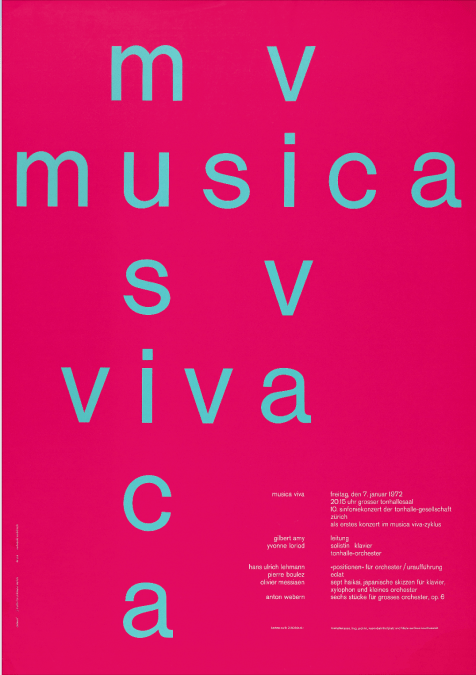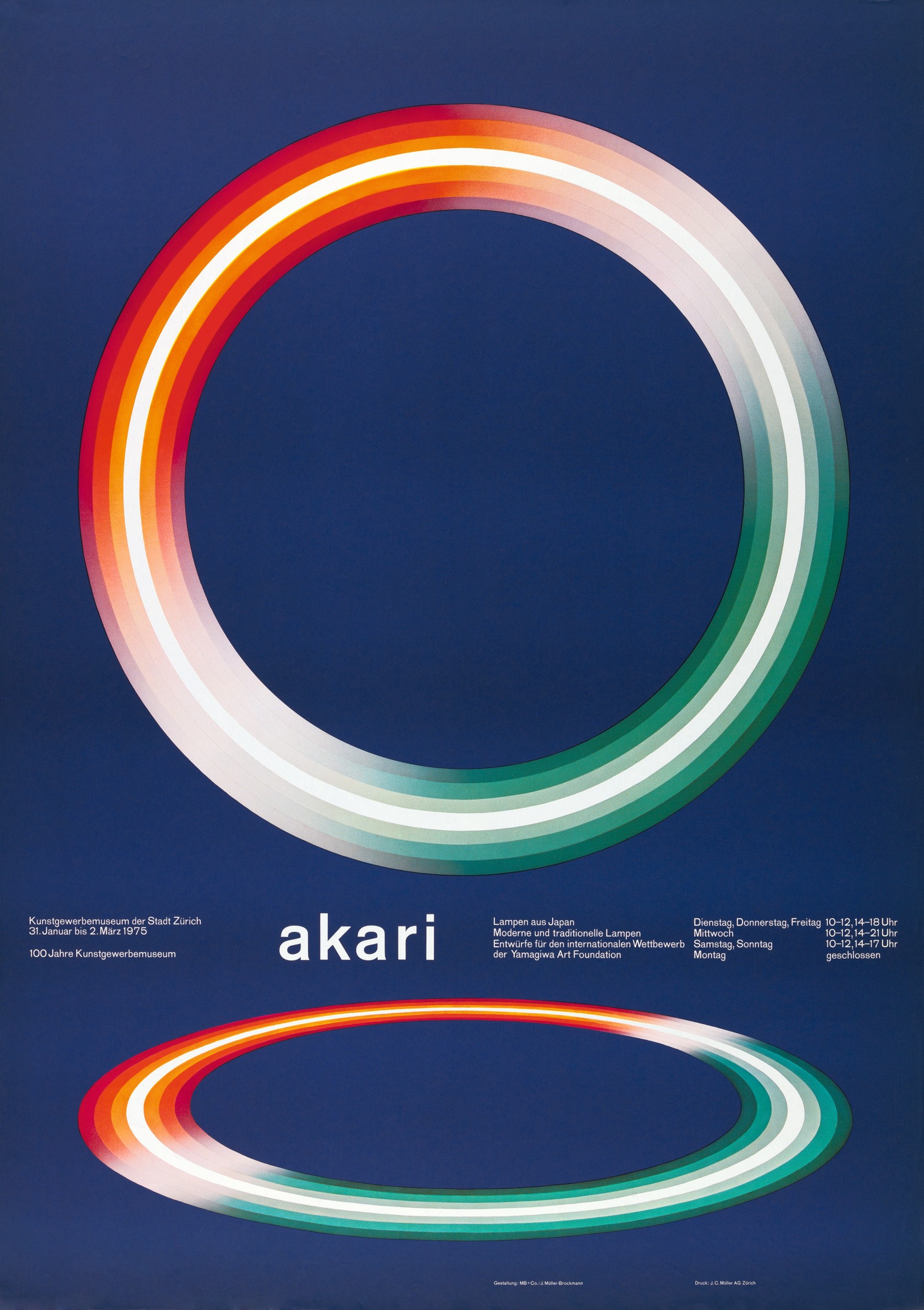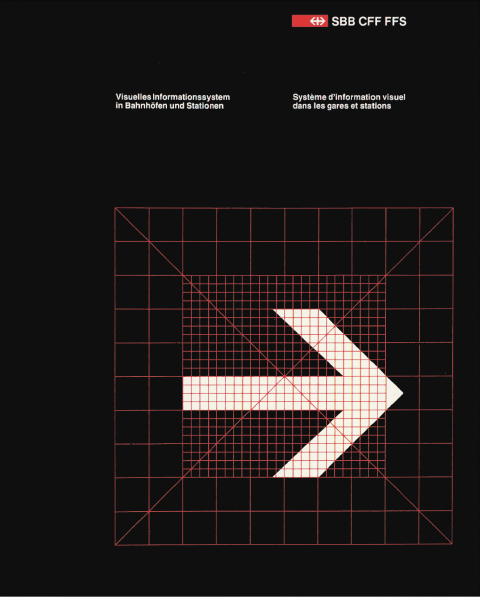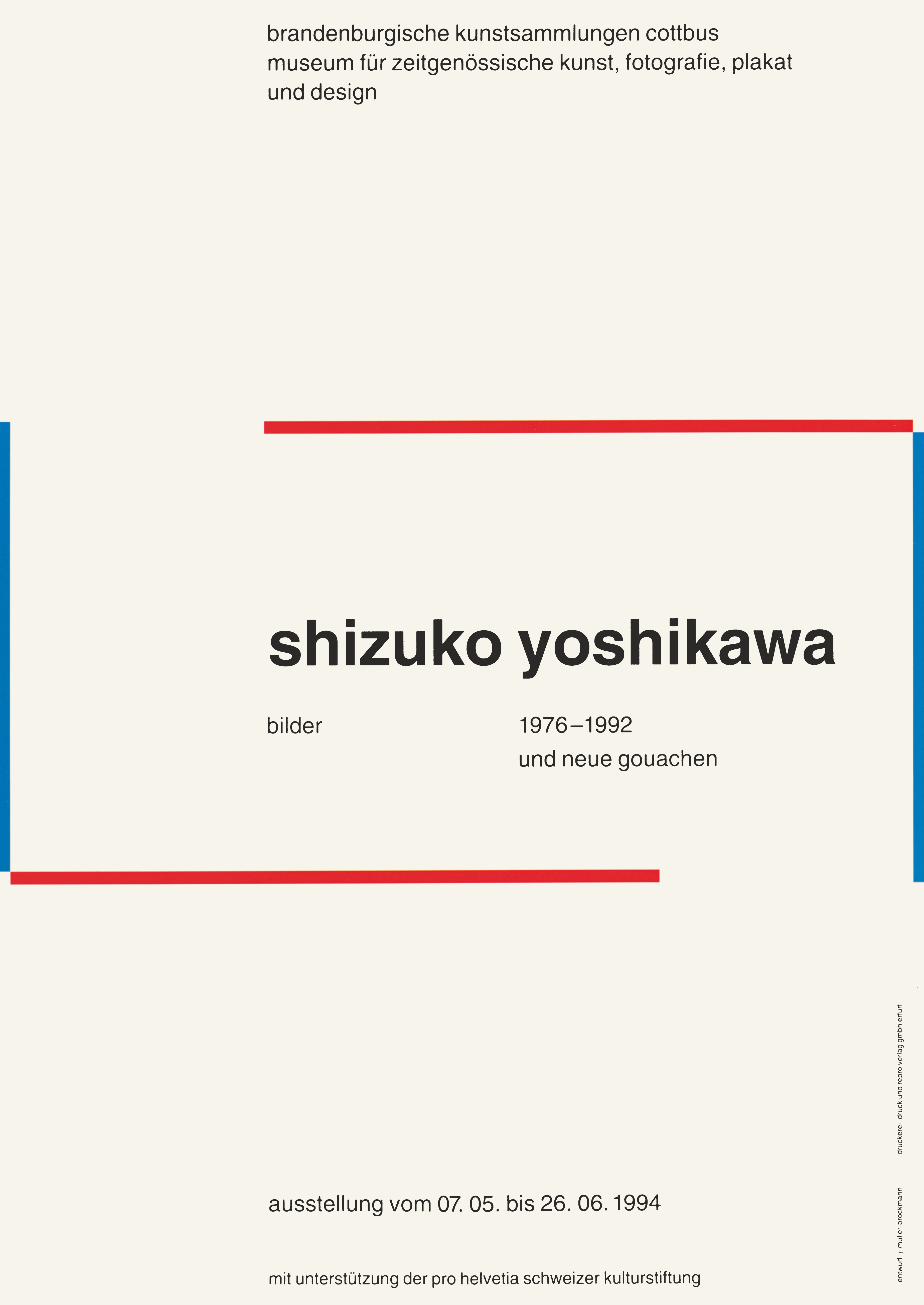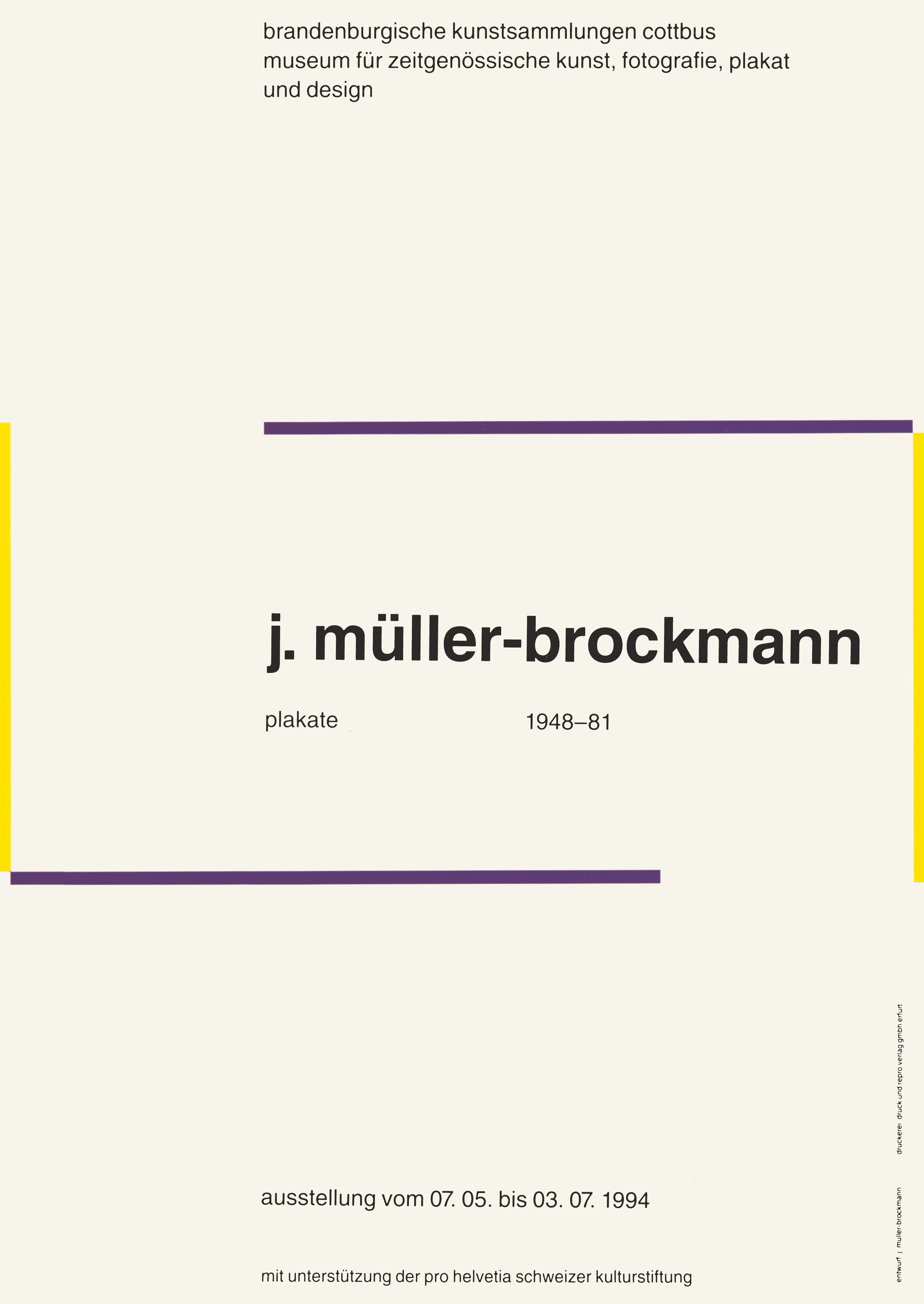Josef Müller-Brockmann, 09.05.1914–30.08.1996
World-renowned graphic designer Josef Müller-Brockmann was a pioneer of Swiss graphic design in the 1950s and 1960s and his Constructivist and Functionalist principles continue to influence the discipline internationally to this day. After an impressive early career as a graphic designer, he made a radical turn towards contemporary modern design in the early 1950s. He owes his great reputation to his tireless activity in communicating his convictions and to his straightforward and warmly human nature. His work has been recognized through the most important national and international awards. Müller-Brockmann married artist Shizuko Yoshikawa in 1967. After 1976 they lived in a spacious modern studio house in Unterengstringen near Zurich, where he died in 1996. Josef Müller was born in 1914 in Rapperswil, Canton St. Gallen, about 40 kilometers from Zurich. After completing the mandatory school program, he began an apprenticeship as a graphic artist, which he abandoned after two unsatisfactory years. The talented draughtsman endeavored to become established as an independent designer and attended classes at the Zurich School of Applied Arts taught by Alfred Willimann and Ernst Keller, two respected and influential graphic artists of the time. He managed to make ends meet with small commissions and continued studying as an autodidact, attending lectures at universities and developing his drawing skills. When he was twenty he moved into his first studio and attracted attention for the shop window decorations and large murals he created, which in 1939 led to a major commission for the Swiss National Exhibition. He planned to use his savings to study for a year with Fernand Léger in Paris. That project was thwarted by the outbreak of war and Müller spent most of the time until 1945 in uniform as an officer in the Swiss army. In 1943 he married violinist Verena Brockmann (19XX–1964) and henceforth went by the name Müller-Brockmann. The couple had one son, Andreas (1944–1992). After the war, his career took off; Müller-Brockmann, much in demand as a graphic artist with strong drawing skills, was entrusted with large-scale projects. He designed exhibitions for Helmhaus in Zurich and for trade fairs at home and abroad. He also made a name for himself as a stage and costume designer, working on performances in Zurich, Munich and Copenhagen. Success finally arrived in 1949 and was also reflected in commercial commissions, as well as the first requests to design music and theatre posters. For all his successes, Müller-Brockmann doubted his artistic talent and harbored doubts about the contemporary significance of his illustrative graphics.
JMB, Hausfrauen seid vorsichtig! (Housewives Beware!), 1952
Advertisement from a accident-prevention campaign in Zurich. Müller-Brockmann’s drawing style sometimes had cartoon-like traits, reminiscent of role models like Georg Grosz or Saul Steinberg. Around 1953 he turned away entirely from drawing and concentrated instead on photography-based graphic design and typography.
THE DAWN OF MODERNITY
Müller-Brockmann’s encounter with Ladislav Sutnar in Prague in 1948 and his engagement with Karel Teige’s oeuvre, the Bauhaus and in particular Moholy-Nagy’s typography were all significant influences, as was his involvement with Jan Tschichold and the New Typography. In the early 1950s he turned to modernism and in the space of just a few years produced a body of design work that anticipated the principles of his later globally influential design theory. In 1950 he began to create his first posters for the Tonhalle Zurich, deploying abstract figures and typographic compositions that were soon replaced by geometric figures and color compositions in the spirit of Concrete Art. Müller-Brockmann’s designs, his creative energy and his studio’s prolific output coincided with a general modernist awakening in Protestant Zurich that led many graphic artists to follow his example and contributed to the flourishing of Constructivist and Functionalist graphic work. In addition, photography-based graphic design grew more popular and Müller-Brockmann was one of the most versatile proponents of this style. In 1953 he won a poster competition organized by the Automobile Club of Switzerland. Incorporating a montage of photographs by Ernst A. Heiniger, the impact of the poster “Schützt das Kind” (Protect the Child!) stems from the dramatic relationship between the speeding motorcycle and the defenseless running boy. Shortly after this, Heiniger followed Walt Disney’s invitation and headed to Los Angeles, rising to fame in the United States as a documentary filmmaker. Müller-Brockmann took over Heiniger’s studio and continued to employ the latter’s collaborator, Serge Libiszewski, a young experimental photographer. Photography became an essential means of expression in the studio’s work. Müller-Brockmann experimented with light painting and abstract photograms while working on various design commissions. The studio developed an independent form of object photography. Swiss industrial companies and service providers drew on the studio’s services and commissioned it to create up-to-the-minute corporate designs for them, some of which are still going strong today.
Alongside Armin Hofmann, who represented the Basel School, Müller-Brockmann became an international figurehead of Swiss graphic design. In 1956 he was invited to speak at the International Design Conference in Aspen/USA. He was accompanied by Armin Hofmann and the architect and writer Max Frisch, and in his lecture addressed modernism’s successes in Swiss design and architecture. That same year he visited New York again. He entertained the idea of trying his hand professionally there after a respected magazine printed an extensive presentation of his work and heaped praise upon it. Nonetheless, despite lucrative offers, he came to the conclusion that he was too rooted in European culture and that the predominantly commercial thrust of production in America would not be conducive to his type of design.
SWISS GRAPHICS
Back in Switzerland, Müller-Brockmann continued to fine-tune his design principles. He launched the journal “Neue Grafik, New Graphic Design, Graphisme actuel,” 18 issues of which were published from 1958 to 1965. His fellow editors were Richard Paul Lohse, Hans Neuburg and Carlo Vivarelli. The journal was an instrument for disseminating everything new. Theoretical texts and historical examples served to elucidate its ethical and aesthetic foundation, seeking to establishing this as a universal standard. Its principles were adopted by many international companies to develop unified corporate design programs based on its rigorous underpinning. The predominantly non-Swiss audience, however, preferred the catchy “Swiss Style” with its prominent figureheads to the purportedly neutral “New Graphic Design” that was also occasionally apostrophized as (Swiss) “International Style.”
In 1957 Müller-Brockmann became involved in the graphic design class at the Kunstgewerbeschule Zürich (Zurich School of Arts and Crafts) and followed in the footsteps of his former teacher Ernst Keller in leading the class. Four years later, in 1960, he left the school again, having failed to gain support for his reform proposals. In the same year he also took part in the WoDeCo (World Design Conference) in Tokyo alongside prominent representatives from Europe and the USA, giving a considerable boost to the modern movement in Japan. Müller-Brockmann was subsequently repeatedly invited to teach at universities in Tokyo and Osaka and immersed himself in the country’s culture. The Tokyo conference was also where he met his future wife, Shizuko Yoshikawa.
Yoshikawa had begun a Master’s in Architecture and Design after her degree in English language and literature. Encouraged by meeting two influential figures from the Ulm School of Design, Tómas Maldonado and Otl Aicher, during WoDeCo, in 1961 she decided to emigrate to Germany to study in Ulm. In 1962 Müller-Brockmann taught there as a guest in the department of visual communication, where he met Yoshikawa again. She subsequently accepted his invitation to come to Zurich in 1963 and collaborated on an extensive design project for Expo 64, the Swiss National Exhibition. Müller-Brockmann and Shizuko Yoshikawa married in 1967.
JMB, schützt das Kind! (protect the child!), 1952/53
Automobil-Club der Schweiz (Automobile Club of Switzerland)
The poster was produced in the course of a competition. It depicts a motorcycle racing along, one of its wheels filling more than half the frame, with the diagonal structuring further heightening the sense of speed. The boy, utterly defenseless, is in great danger. Photography: Ernst. A. Heiniger. The first poster in a campaign series by the Automobil-Club.JMB, beethoven, February 22nd, 1955
Poster for the Tonhalle-Gesellschaft Zürich
By his own admission, Müller-Brockmann spent two months designing this poster. It is one of his most important. The movement and vigor of the composer’s music are expressed in the geometric figure. Müller-Brockmann convinced the client that using lower-case print throughout would produce a more regular look for the typeface, making it more appropriate to the music.
JMB, der Film (the film), 1960
Kunstgewerbemuseum Zürich
A masterpiece of composition and semantics.
As a designer, Müller-Brockmann became world famous in the 1960s, especially for his posters, and consolidated his influence as a pioneer of Swiss graphic design in a consultant role. Commissions in Germany, from porcelain manufacturer Rosenthal and from Weishaupt, a company producing heating systems, led to the temporary establishment of a studio in Nuremberg in 1963. The relationship with the two patrons was close. The consultation included design and advertising as well as architecture and art. Weishaupt began collecting abstract art at Müller-Brockmann’s suggestion and, with him as go-between, hired Walter Gropius as an architect for the growing company. In 1967, Müller-Brockmann was appointed design consultant for IBM Europe, an honorable and demanding position he held until 1988. For the IBM Gallery in New York, he initiated presentations by Swiss artists and photographers, including, in 1967, the exhibition Concrete Art of Zurich.
In response to the growing number of advertising and design commissions he received, in 1967 he founded the advertising agency Müller-Brockmann & Co, later MB & Co, in Zurich. After the partnership was dissolved in 1976, Müller-Brockmann continued to run the agency with a small team until 1984, in addition to his consulting and lecturing activities, tackling significant design tasks, including the development of the SBB passenger information system, which still shapes the Swiss Federal Railways look today.
A PASSION FOR ART EDUCATION
JMB devoted his artistic talent primarily to designing media and content for a mass audience, albeit with a handful of exceptions. His passion was for communication. The urge to transmit his own insights and share them with others is evidenced by his teaching activities, as well as his publications, above all Gestaltungsprobleme des Grafikers (1961) (The Graphic Artist and his Design Problems) and Rastersysteme für die visuelle Gestaltung (Grid Systems in Graphic Design), 1981, as well as documentations on the history of visual communication and poster history. In his lectures, also during his many travels, the designer advocated the principles of his design approach worldwide, along with his demands vis-à-vis design professionals, namely that they should put objective and functional form at the service of content and meet high ethical and social standards.
He aimed as a gallerist to promote Constructivist/Concrete art. In galerie seestrasse in Rapperswil he exhibited well-established and lesser-known representatives of the art movement and offered their art in editions. He had lifelong friendships with many artists. His origins, educational background and professional career by no means predestined
Josef Müller-Brockmann to play such a leading role in the new approach to design nor to be such an influential advocate of modernism. His thirst for knowledge, cosmopolitan openness and discipline enabled his radical change of course in the early 1950s, to which we owe one of the twentieth century’s most impressive bodies of graphic design work.
Josef Müller-Brockmann died on August 30th 1996.
JMB, weniger Lärm, (Less Noise),1960
Schweizerisches Komitee für Lärmbekämpfung (Swiss Committee for Noise Abatement)
Maximum expressivity with minimal means in a masterful composition.
JMB, musica viva, October 10th, 1961
Tonhalle-Gesellschaft Zürich
The radical typography suggests rhythm and melody through the spatial configuration of the composition, font size, typographic alignment and type color.
JMB, musica viva, January7th 1972
Tonhalle-Gesellschaft Zürich
The typography turns into a score. Towards the end of his collaboration with the Tonhalle-Gesellschaft, Müller-Brockmann conjured up lively bright colors and playful yet nevertheless rigorous typography.
JMB, akari – lamps from Japan, 1975
Kunstgewerbemuseum der Stadt Zürich
Geometric simplicity with a Japanese touch.
JMB, Visual Information System for Stations and Railway Stations, 1980
Swiss Federal Railways (SBB)
The rigorously functional and striking ideogram and typeface system has underpinned the SBB’s appearance for forty years.
JMB & SY, shizuko yoshikawa / j. müller-brockmann, 1994
Brandenburgische Kunstsammlung Cottbus/D
Poster for a joint exhibition. The composition combines formal principles from the work of both artists.
_SY & JMB, shizuko yoshikawa / j. müller-brockmann, 1994
Brandenburgische Kunstsammlung Cottbus/D
Poster for a joint exhibition. The composition combines formal principles from the work of both artists.
